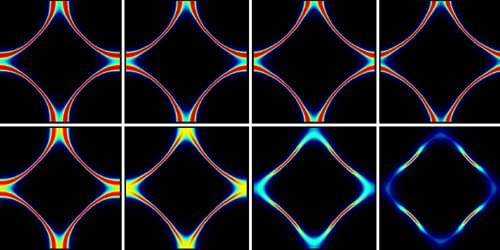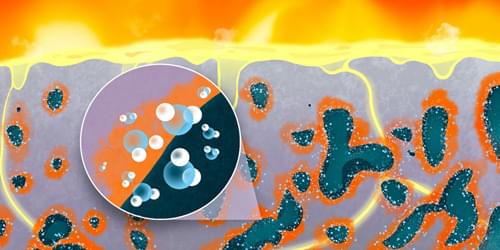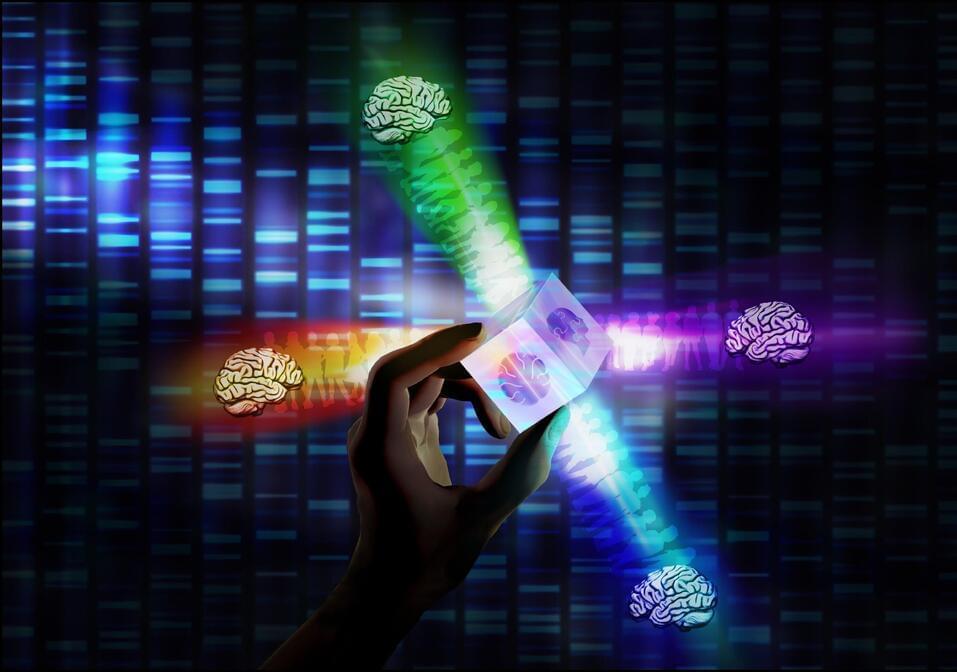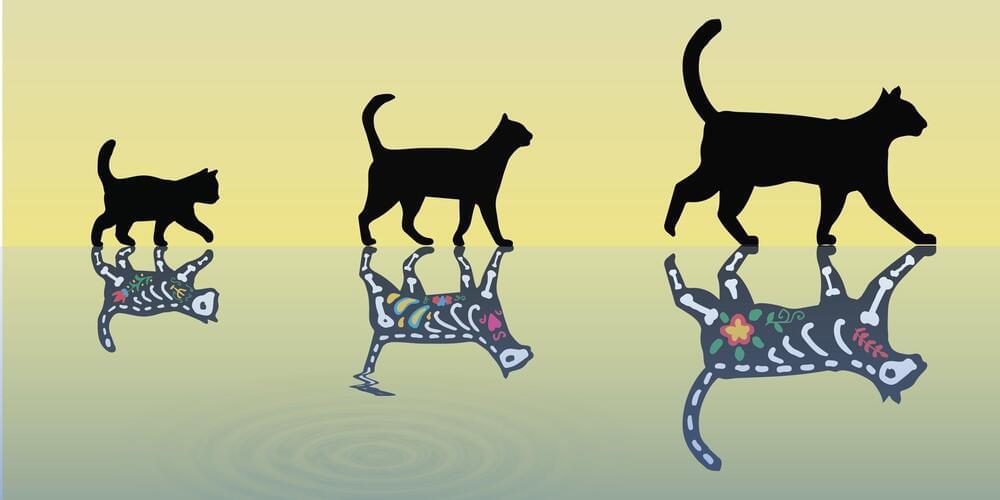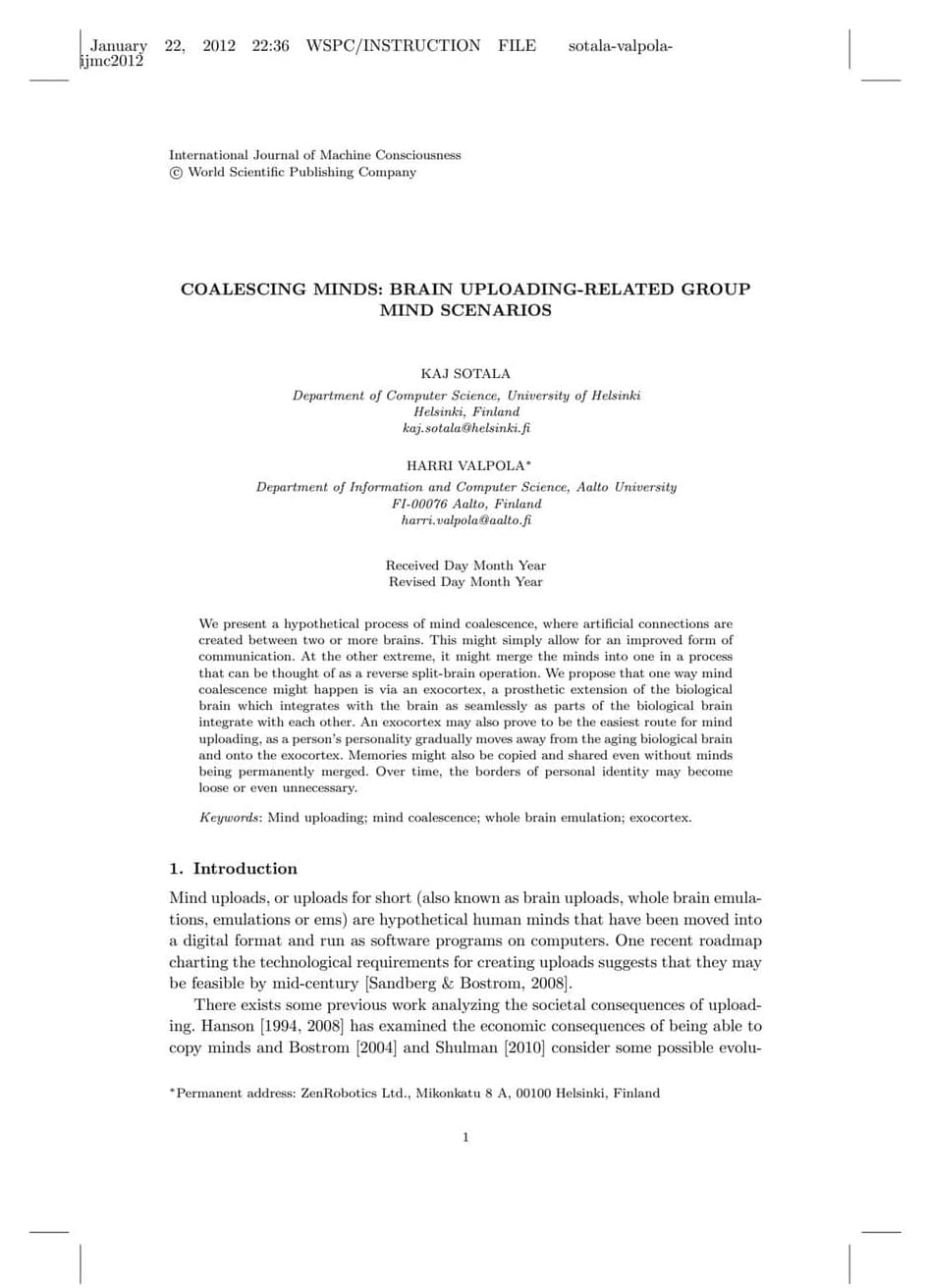Calculations motivated by the successful prediction of the nickelate phase diagram suggest that palladates might hit the sweet spot for high-temperature superconductivity.
Researchers have investigated how pores in a solid change its chemical reactions with other materials. The result could make steel production more environmentally friendly.
Graphene is found to exhibit a magnetoresistance dwarfing that of all known materials at room temperature—a behavior that may lead to new magnetic sensors and help decipher the physics of strange metals.
One might expect that, two decades after its discovery, graphene would have exhausted its potential for surprises. But the thinnest, strongest, most conductive of all materials has now added another record to its tally. A collaboration that includes graphene’s codiscoverer and Nobel laureate Andre Geim of the University of Manchester, UK, reports that graphene can have a room-temperature magnetoresistance—a magnetic-field-induced change in electrical resistivity—that’s 100 times larger than that of any known material [1]. Graphene’s giant magnetoresistance could lead to novel magnetic-field sensors but also offer an experimental window into exotic quantum regimes of electrical conduction that might be related to the mysterious “strange metals.”
Magnetoresistance, which occurs both in bulk materials and multilayer structures, found a killer app in magnetic-field sensors such as those used to read data from magnetic memories. Researchers have long been interested in the limits of this phenomenon, which has led to discoveries of “giant,” “colossal,” and “extraordinary” forms of magnetoresistance. The associated materials exhibit resistivity changes of up to 1,000,000% when exposed to magnetic fields of several teslas (T). The largest effects, however, require extremely low temperatures that can only be reached with impractical liquid-helium cooling systems.
Autism spectrum disorder (ASD) is a developmental disorder associated with difficulties in interacting with others, repetitive behaviors, restricted interests and other symptoms that can impact academic or professional performance. People diagnosed with ASD can present varying symptoms that differ in both their behavioral manifestations and intensity.
As a result, some autistic individuals often require far more support than others to complete their studies, learn new skills and lead a fulfilling life. Neuroscientists have been investigating the high variability of ASD for several decades, with the hope that this will aid the development of more effective therapeutic strategies tailored around the unique experiences of different patients.
Researchers at Weill Cornell Medicine have recently used machine learning to investigate the molecular and neural mechanisms that could underlie these differences among individuals diagnosed with ASD. Their paper, published in Nature Neuroscience, identifies different subgroups of ASD associated with distinct functional connections in the brain and symptomatology, which could be related to the expression of different ASD-related genes.
The DarkSide experiment is an ambitious research effort aimed at detecting dark matter particle interactions in liquid argon using a dual-phase physics detector located at the underground Gran Sasso National Laboratory. These interactions could be observed by minimizing background signals, and this could be possible thanks to the remarkable discrimination power of the scintillation pulse of liquefied argon in the DarkSide-50 detector, which can separate nuclear recoil events associated with these interactions from more than 100 million electronic recoil events linked to radioactive background.
The large team of researchers involved in the DarkSide experiment has recently been using the detector to search for lighter dark matter particles. The results of a new search for dark matter–nucleon interactions, published in Physical Review Letters, allowed them to set new constraints for sub-GeV/c2 dark matter.
“The DarkSide-50 experiment was designed as a test for the use of argon from underground sources, naturally depleted in the radioactive 39 Ar, for very large scale dark matter searches,” Cristiano Galbiati a Researcher at Princeton University and the Gran Sasso Science Institute, told Phys.org. “It is remarkable to see how a group of young researchers within the collaboration was able to exploit the apparatus to extract the best limit for dark matter searches that were not part of the original scope of the experiment. If anything, the ingenuity and resolve of this group should be credited for this important result.”
Even if you are not a quantum physicist, you will most likely have heard of Schrödinger’s famous cat. Erwin Schrödinger came up with the feline that can be alive and dead at the same time in a thought experiment in 1935. The obvious contradiction—after all, in everyday life we only ever see cats that are either alive or dead—has prompted scientists to try to realize analogous situations in the laboratory. So far, they have managed to do so using, for instance, atoms or molecules in quantum mechanical superposition states of being in two places at the same time.
At ETH, a team of researchers led by Yiwen Chu, professor at the Laboratory for Solid State Physics, has now created a substantially heavier Schrödinger cat by putting a small crystal into a superposition of two oscillation states. Their results, which have been published this week in the journal Science, could lead to more robust quantum bits and shed light on the mystery of why quantum superpositions are not observed in the macroscopic world.
In Schrödinger’s original thought experiment, a cat is locked up inside a metal box together with a radioactive substance, a Geiger counter and a flask of poison. In a certain time-frame—an hour, say—an atom in the substance may or may not decay through a quantum mechanical process with a certain probability, and the decay products might cause the Geiger counter to go off and trigger a mechanism that smashes the flask containing the poison, which would eventually kill the cat.
Astronomers using data from NASA’s Chandra X-ray Observatory and other telescopes have identified a new threat to life on planets like Earth: a phase during which intense X-rays from exploded stars can affect planets over 100 light-years away. This result, as outlined in our latest press release, has implication for the study of exoplanets and their habitability.
This newly found threat comes from a supernova’s blast wave striking dense gas surrounding the exploded star, as depicted in the upper right of our artist’s impression. When this impact occurs it can produce a large dose of X-rays that reaches an Earth-like planet (shown in the lower left, illuminated by its host star out of view to the right) months to years after the explosion and may last for decades. Such intense exposure may trigger an extinction event on the planet.
A new study reporting this threat is based on X-ray observations of 31 supernovae and their aftermath—mostly from NASA’s Chandra X-ray Observatory, Swift and NuSTAR missions, and ESA’s XMM-Newton—show that planets can be subjected to lethal doses of radiation located as much as about 160 light-years away. Four of the supernovae in the study (SN 1979C, SN 1987A, SN 2010jl, and SN 1994I) are shown in composite images containing Chandra data in the supplemental image.
People are outsourcing home-based tasks like meal prep and bedtime stories to artificial intelligence, too.
Synthesis AI, a startup that specializes in synthetic data technologies, announced that they have developed a new technology for digital human creation, which enables one to create highly realistic 3D digital humans from text prompts using generative AI and VFX pipelines.
The technology showcased by Synthesis AI allows users to input specific text descriptions such as age, gender, ethnicity, hairstyle, and clothing to generate a 3D model that matches the specifications. Users can also edit the 3D model by changing text prompts or using sliders to adjust features like facial expressions and lighting.
Dropbox is a free service that lets you bring your photos, docs, and videos anywhere and share them easily. Never email yourself a file again!
